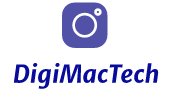Introduction
In recent years, the rise of wearable health technology has transformed how individuals manage their health and wellness. From tracking daily steps to monitoring sleep patterns, these devices have become integral to our everyday lives. However, the latest advancements have taken a significant leap forward: wearable health monitors that can predict heart attacks days before they occur. This groundbreaking technology is not only changing the landscape of personal health monitoring but also has the potential to save countless lives. In this article, we will explore how these devices work, their benefits, challenges, and what the future holds for wearable health technology.
Understanding Wearable Health Monitors
Wearable health monitors are devices that collect data about an individual’s physiological functions. These can include heart rate, blood pressure, oxygen levels, and other critical health metrics. By using sensors and advanced algorithms, these devices analyze the collected data to provide insights into a user’s health status. Recent innovations have extended their capabilities to predict significant health events, such as heart attacks.
How Do They Predict Heart Attacks?
The ability to predict heart attacks involves sophisticated predictive analytics and machine learning algorithms that analyze vast amounts of health data. Here’s a closer look at how these wearable monitors achieve this:
- Data Collection: Wearable devices gather real-time data including heart rate variability, ECG readings, physical activity levels, and stress indicators.
- Pattern Recognition: Advanced algorithms analyze historical data patterns to identify anomalies or changes that could indicate an impending heart event.
- Alerts and Notifications: Users receive alerts on their devices, prompting them to seek medical advice or take preventive measures.
The Science Behind the Technology
Wearable monitors utilize various biosensors that continuously record data. For instance, some devices can measure electrical signals from the heart to provide an electrocardiogram (ECG) reading. Machine learning models are trained on vast datasets, which include information from thousands of individuals, enabling the devices to recognize risk factors and potential heart issues before they manifest in acute events.
The Benefits of Predictive Wearable Technology
1. Early Detection
One of the primary advantages of wearable health monitors is the capability for early detection of heart-related issues. By recognizing changes in vital signs, these devices can alert users to seek medical attention before a heart attack occurs. This early intervention can drastically reduce mortality rates.
2. Empowering Individuals
Wearable technology empowers individuals to take control of their health. By providing real-time insights, users can make informed decisions about their lifestyle, such as modifying their diet, increasing physical activity, or managing stress levels.
3. Personalized Health Insights
Each individual’s health is unique, and wearable health monitors leverage this by providing personalized recommendations. These tailored insights can improve adherence to health routines and promote better overall well-being.
4. Reduced Medical Costs
Preventing heart attacks through timely interventions can significantly reduce healthcare costs associated with emergency services, hospital stays, and long-term treatments.
Challenges and Limitations
1. Data Privacy Concerns
As with any technology that collects personal health information, privacy is a significant concern. Users must be assured that their data is secure and used ethically, as breaches could have severe implications.
2. Accuracy of Predictions
While advancements in technology have improved the accuracy of predictions, there is always a margin of error. False positives can lead to unnecessary anxiety, while false negatives can have dire consequences.
3. Accessibility
Not everyone has access to these advanced devices due to socioeconomic factors. Ensuring equitable access to health technology remains a challenge that needs addressing.
Future Predictions for Wearable Health Monitors
The future of wearable health technology is promising and holds the potential for even more advanced capabilities:
1. Integration with Healthcare Systems
As wearable technology continues to evolve, we can expect better integration with healthcare systems. This seamless connectivity will allow healthcare professionals to monitor patients remotely, leading to proactive healthcare management.
2. Advanced AI and Machine Learning
Advancements in AI will enhance the predictive capabilities of wearable monitors. With more data and improved algorithms, these devices will become even more reliable in predicting heart attacks and other health events.
3. Expanding Functionality
The next generation of wearable devices may include additional functionalities, such as monitoring glucose levels for diabetic patients or testing blood samples for a comprehensive health overview.
Real-Life Examples
Several companies have already made strides in developing wearable devices with predictive capabilities:
- Apple Watch: The latest series includes ECG capabilities and notifications for irregular heart rhythms, which can signal potential heart issues.
- Fitbit: With its advanced heart rate monitoring features, Fitbit devices can alert users to unusual heart activity.
Conclusion
Wearable health monitors that predict heart attacks days before they occur are not just a technological marvel; they represent a significant leap toward proactive healthcare. By empowering individuals to monitor their health and providing early warnings, these devices have the potential to save lives and improve health outcomes. As technology continues to advance, we can expect wearable health monitors to become even more sophisticated, ultimately revolutionizing how we approach heart health.
Call to Action
If you are interested in taking control of your heart health, consider investing in a wearable health monitor. Stay informed about your health and empower yourself to make proactive decisions.
